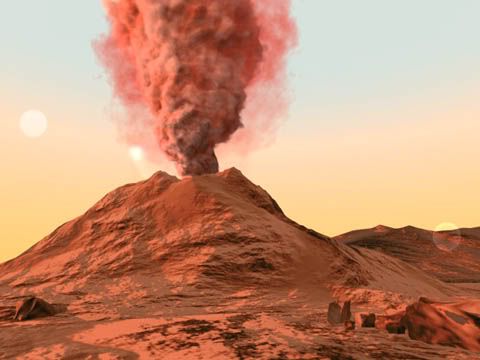This past week I have been interviewing dozens of volcanologists and astronomers for my two final papers in my science journalism classes. One paper is on an Antarctic volcano that is injecting burning hot lava underneath a frozen ice sheet. The other paper is on the red-hot debate over the classification of newly discovered celestial objects—that is, how astronomers are having to redefine the word “planet” to keep tiny oddball Pluto in with the Big Nine and exclude all these massive new guys that they keep finding.
With these two seemingly opposite topics juxtaposed artificially through a hectic school schedule, I hadn’t anticipated that I would discover two important ways that volcanology and astronomy are related. I mean, in addition to the fact that they are both Earth/planetary sciences.
For one, astronomers and volcanologists both like to hang out on or near volcanoes. That’s right, most every one of these guys and gals are located in Hawaii. Volcanologists like to work within an easy distance of a volcano for obvious reasons. However, astronomers also dig volcanoes as sights for their observatories. Apparently, the telescopes get better images when located at higher altitudes, which have a thinner atmosphere and therefore have fewer pesky air molecules blocking and scattering the light from distant stars. Higher altitudes can be achieved on, you guessed it, pointy volcano summits.
The other commonality is less of a coincidence: Some astronomers study volcanoes on other planets. Why is this so cool? I can’t tell you for certain. Perhaps it has something to do with the sisterly feeling I get from knowing that another alien planet has similar blemishes on its surface. One guy I spoke with uses heat-detecting satellites to study both Earthly and Martian volcanoes. Awesome!
[Image from http://www.digitalmedia.cz/3dsoftware/show.asp?nid=128]

No comments:
Post a Comment